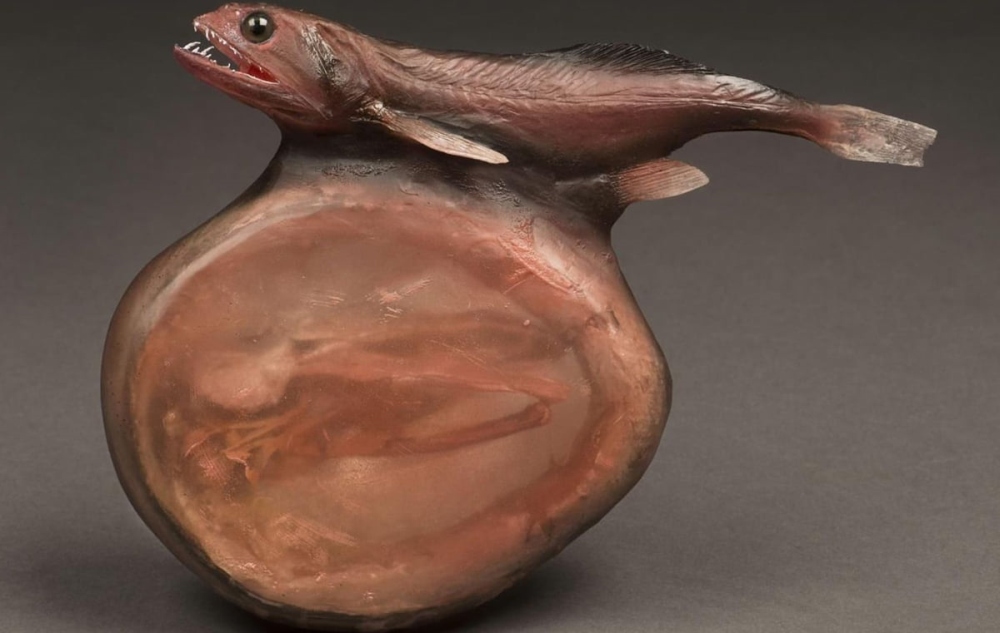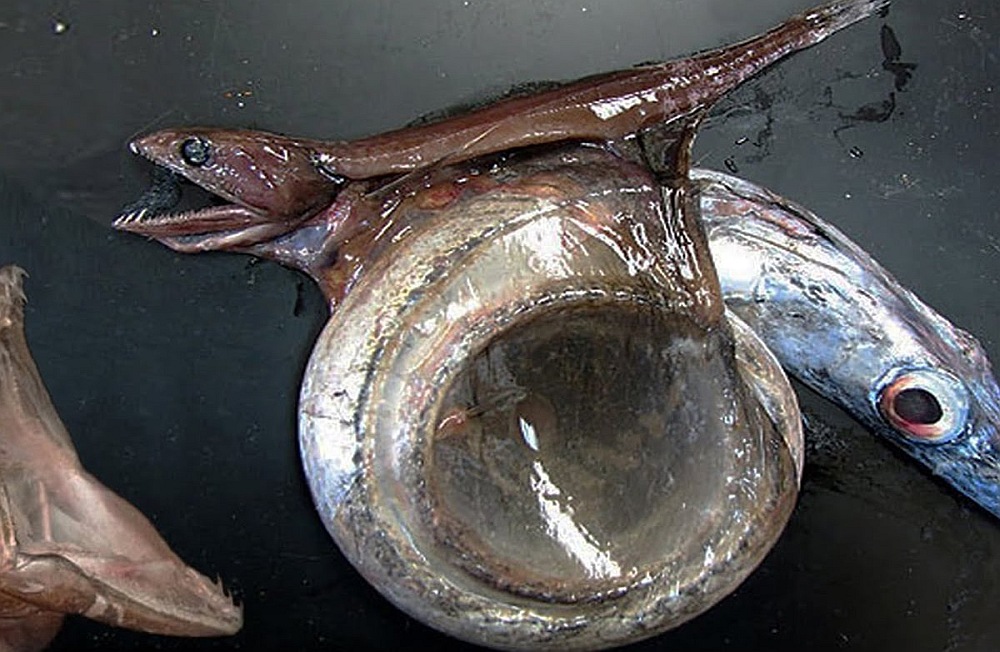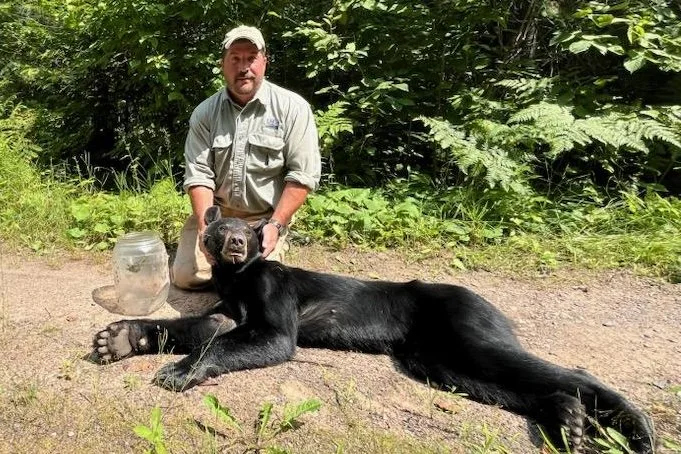This monstrous little fish is a notorious hunter: with the help of its large teeth and balloon-like stomach, it can swallow fish up to 10 times its size.

The black swallower can eat much larger prey due to its distensible stomach. Image source: Brutal_deluxe
The black swallower (Chiasmodon niger) is a deep-sea fish that belongs to the family Chiasmodontidae. It can be found all over the tropical and subtropical seas of the world, mostly at depths of 2297–9006 feet (700–2745 meters). On average, they measure 6 to 8 inches (15 cm to 20 centimeters) long, but specimens have been found that grew as long as 9,8 inches (25 centimeters).
The black swallower’s scaleless body appears to be elongated, and brownish-black in color. Its blunt head sports small black eyes, and a grisly mouth that it uses to suffocate and swallow prey. Its lower jaw extends beyond the upper one, and both are lined with a row of sharp teeth that interlock when the mouth is closed. With these long teeth, it can push its prey through the jaw, locking it in. The prey eventually ends up in a distensible gut that usually hangs below the black swallower’s body.
These spectacular features allow the black swallower to swallow bony fish twice its length, and 10 times its mass. All this without even chewing on the unlucky fish. It’s believed to hunt by biting on the tail of its prey and then walking its jaws over its body until it’s completely coiled inside the swallower’s stomach.

Despite its ability to consume larger prey, it can also cause its Image source: Brutal_deluxe
Given that the species lives below the twilight zone, it can rarely be seen in its natural habitat. Dead specimens, on the other hand, are often brought to the surface, since these deep-water hunters occasionally try to bite off more than they can chew. Sometimes they swallow fish so big that before they could even digest it, decomposition sets in, and the releasing gases force the swallowers to the surface, killing them in the process.
In fact, this is how the species was discovered by James Yate Johnson in 1864, off Bermuda. Scientists recorded another case in 2007, when a 7,5 inches (19 centimeters) long swallower was found dead off the coast of Grand Cayman. The stomach of that specimen contained a 33,9 inches (86 centimeters) long dead snake mackerel (Gempylus serpens); four and a half times its own length.

An early sketch of the black swallower from 1866. Image credit: G.H.Ford
Due to its deep living habitat, we know very little about the species apart from that they follow an oviparous reproduction process. This means that female black swallowers lay the eggs, with little or no embryonic development within the mother.
While it’s impossible to determine how many members of the species live in the oceans, their large habitat range suggests that black swallowers live in high abundance around the world. Therefore, the IUCN Redlist has listed them as Least Concern.

